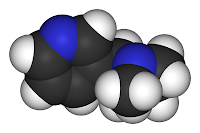That is one of the few names people name it in the ancient times. Now, it has become an item of common within the modern society called 'cigarette'. The fact that item of such poisonous magnitude is commercialized is astounding. Chemical analysts founded certain harmful chemicals to be of unusually high amount. It is a research that had already stand for years since the first production of cigarette. Main constituents include nicotine, nicotianine, and tobacco acid. Other harmful chemicals that made cigarette a whole include nitric, hydrochloric, sulphuric, citric, acetic, oxalic, pictic and ulmic acids.
The constituents mineral matter level is certainly of a large amount. They can amount up to 27 percent in each cases varying only by producer. Modern cigarettes differ from manufacturers to another but generally looks and smell the same.
Furthermore, cigarettes emit poisonous gases such as carbon monoxide and other harmful gases generally referred to second-hand smoke (SHS). Before the release into the air of enviroment. little known fact that the Toxic Air Contaminant (TAC) are a mixture of benzene, 1,3 butadiene, and arsenic which are all extremely fatal if these compounds were to inhale directly into the body. As study shows around the world, these compounds are then released into the air as 40 tons of nicotine, 365 tons of respirable particulate matter, and 1900 tons of carbon monoxide in an average city alone.
- The inhalation of these gases can cause premature births, low-birth weight babies, Sudden Infant Death Syndrome (SIDS), asthma, infections of the middle ear and respiratory system, breast cancer, lung and nasal sinus cancer, heart and cardiovascular diseases as well as eye and nasal irritation. Therefore, second-hand smoke (SHS) are obviously considered in the same category as the most toxic automotive and industrial air pollutants.

General Chemicals Contained in Manufactured Tobacco:
- acetaldehyde (1.4+ mg)
- arsenic (500+ ng)
- cadmium (1,300+ ng)
- crotonaldehyde (.2+ µg)
- chromium (1,000+ ng)
- ethylcarbamate 310+ ng)
- formaldehyde (1.6+ µg)
- hydrazine (14+ ng)
- lead (8+ µg)
- nickel (2,000+ ng)
- radioactive polonium
- benzo(a)pyrene (.1+ng)
Nicotine as we know is a toxic chemical generally. Specifically it had been determined as a colorless, oily, water-soluble, highly toxic, liquid alkaloid, found in tobacco and valued as an insecticide. Therefore, with nicotine levels as high as 1,000-3,000 µg per cigarette we can simply think that human beings or specifically smokers are inhaling insecticide everytime they smoke. The subtanstial amount of drug encrypted into smokers daily can tell easily that it is fatal as well as hazardous to those around. The nicotine molecular formula are as below:

3D-Molecular Shape of Nicotine
nicotine (insecticide) = C10H14N2
Here's is further description of what nicotine are:
- NICOTINE, C10H14N2, an alkaloid, found with small quantities of nicotimine, C19H14N2, nicoteine, C10H12N2, and nicotelline, C10H8N2, in tobacco.
- These four alkaloids exist in combination in tobacco chiefly as malates and citrates.
- The alkaloid is obtained from an aqueous extract of tobacco by distillation with slaked lime, the distillate being acidified with oxalic acid, concentrated to a syrup and decomposed by potash.
- The free base is extracted by ether and fractionated in a current of hydrogen.
- It is very hygroscopic, dissolves readily in water, and rapidly undergoes oxidation on exposure to air.
- On oxidation with chromic or nitric acids, or potassium permanganate, it yields nicotinic acid or ß3 pyridine carboxylic acid, C5H4N - CO2H; alkaline potassium ferricyanide gives nicotyrine, C10H14N2, and hydrogen peroxide oxynicotine, C10H14N2O.
- Nicotine may be recognized by the addition of a drop of 30% formaldehyde, the mixture being allowed to stand for one hour and the solid residue then moistened by a drop of concentrated sulphruic acid, when an intense rose red colour is produced.

Chemical Structure of Nicotine
Medical evidence shows that even a short (e.g., 30 minutes) exposure to TTS causes adverse cardiovascular effects in seven areas: (a) decreased artery elasticity; (b) impaired endothelial function; (c) increased platelet activation; (d) impaired cardiac autonomic function (heart rate variability); (e) impaired lipid metabolism; (f) decreased exercise tolerance, and (g) build-up of particulates in the lungs, which can obstruct breathing and blood flow, thus increase the workload of the heart.
Cigarette or simply manufactured tobacco poses health risk and causing lung cancer and heart disease in adults, and exacerbation of asthma, lower respiratory illnesses and other adverse effects on the respiratory health of children. Currently, the only means of effectively eliminating health risk associated with indoor exposure is to ban smoking activity.
